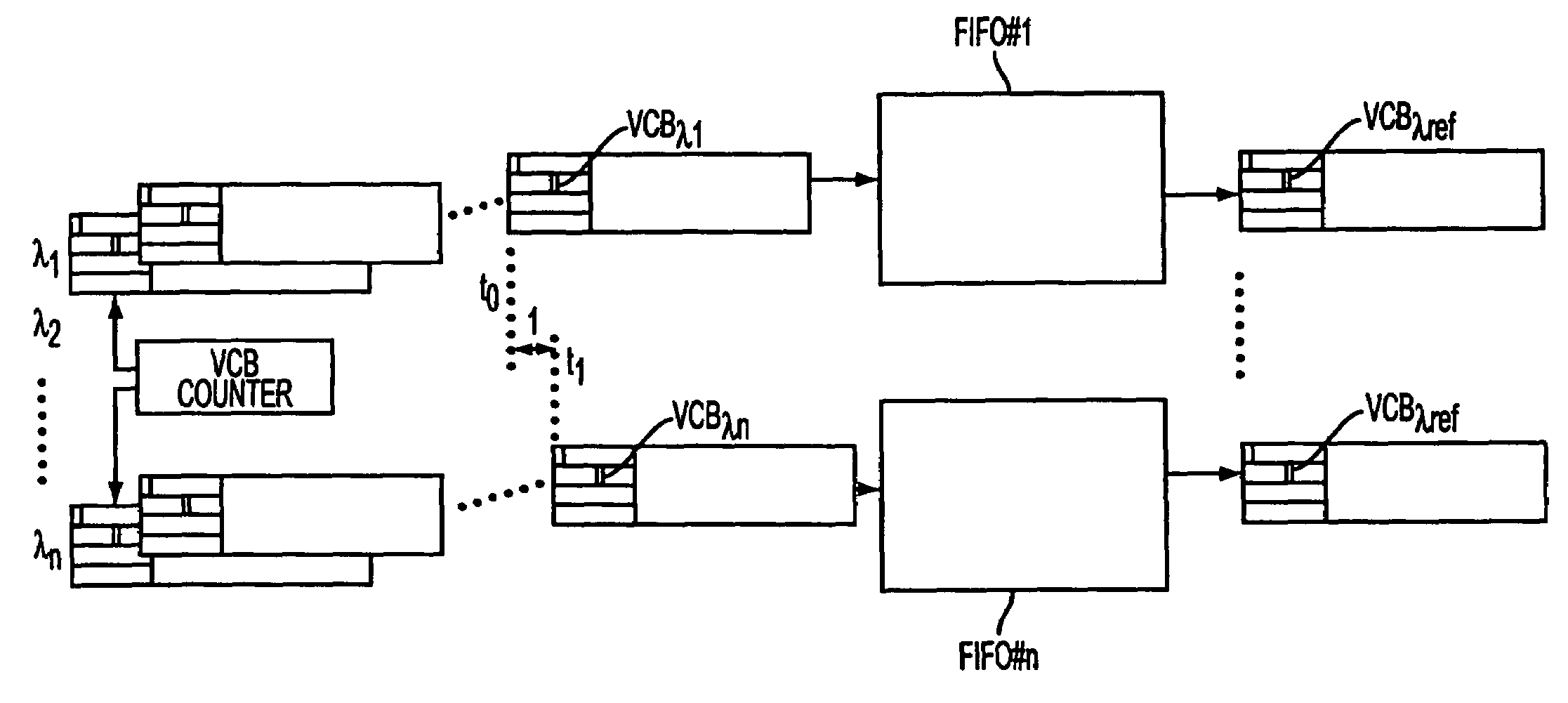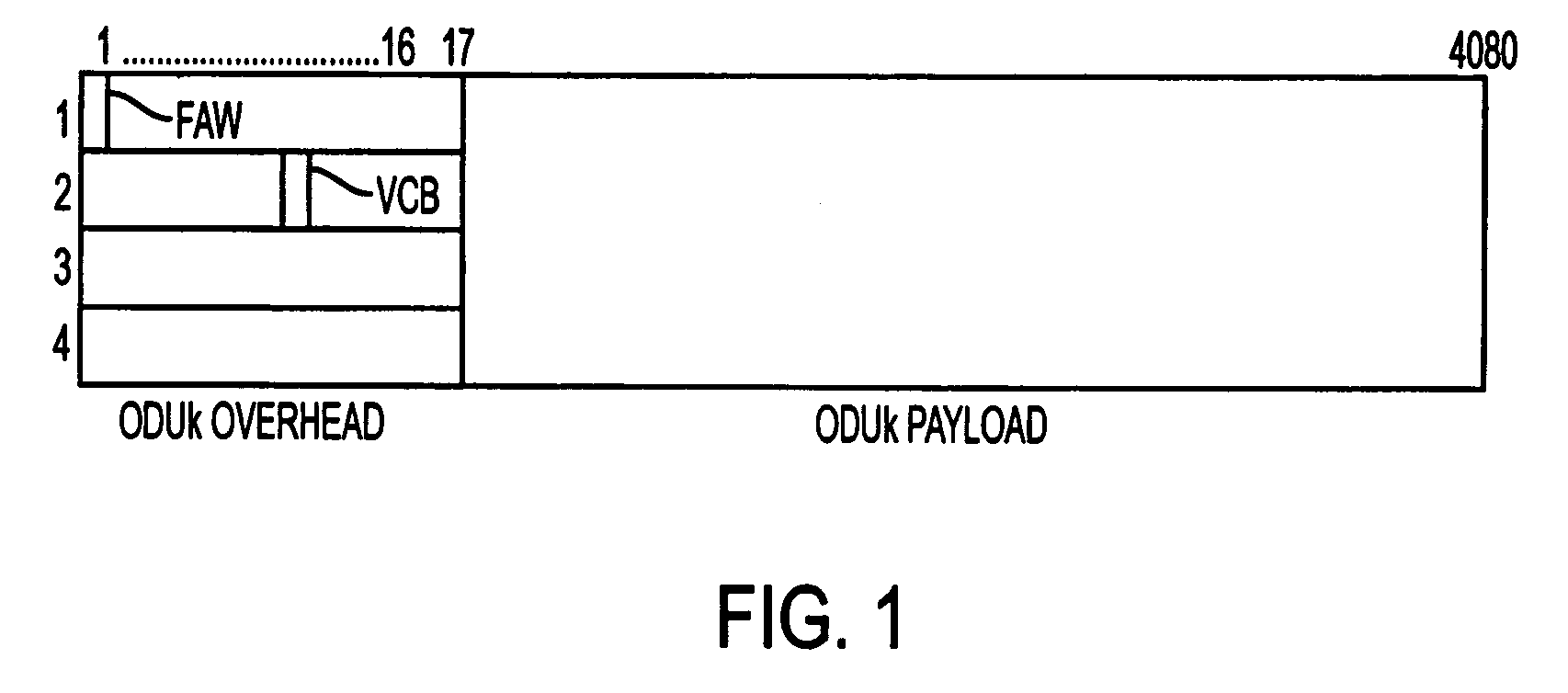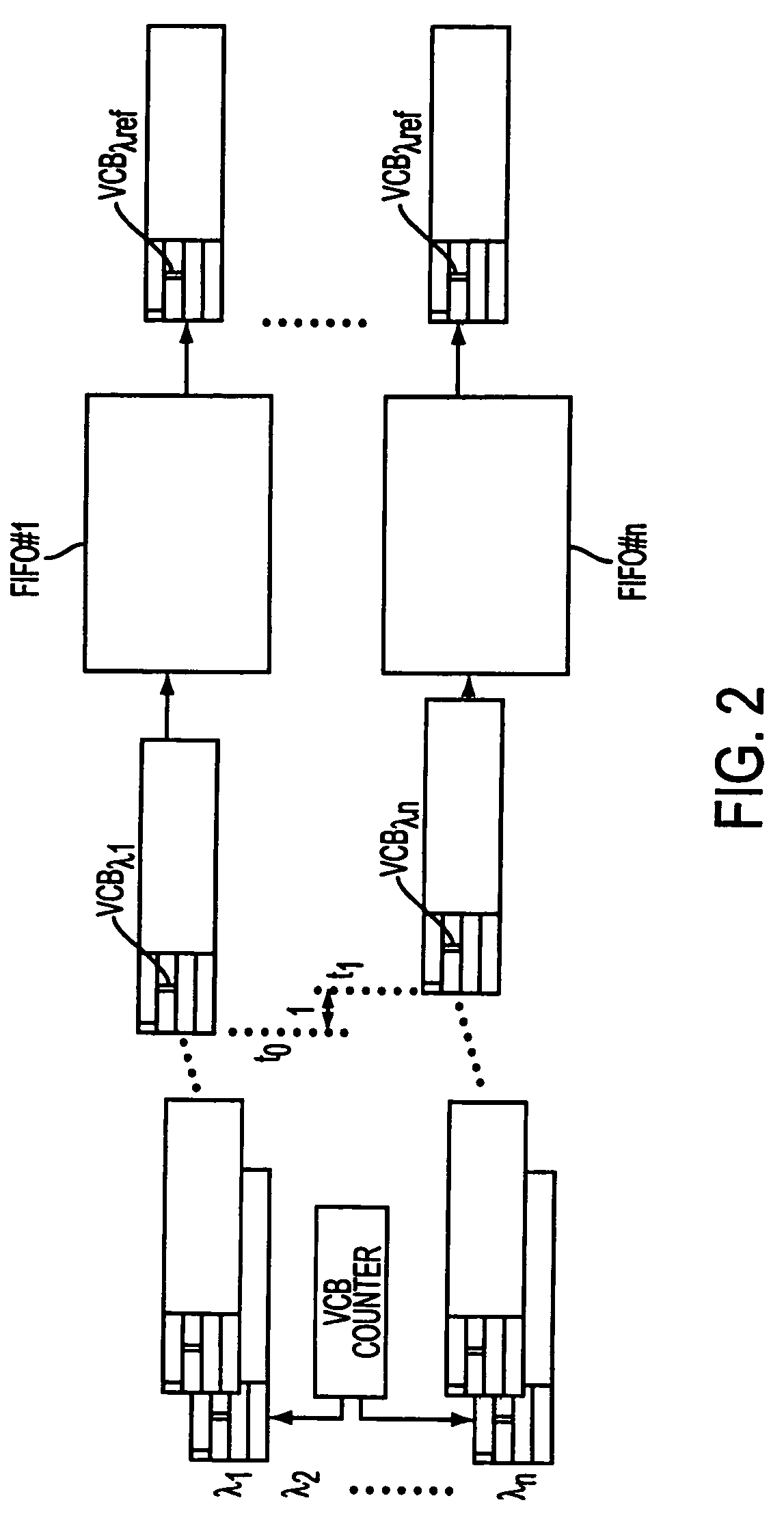Virtual concatenation of optical channels in WDM networks
- Summary
- Abstract
- Description
- Claims
- Application Information
AI Technical Summary
Benefits of technology
Problems solved by technology
Method used
Image
Examples
Embodiment Construction
[0029]In FIG. 1 an ODUk frame is indicated in which the header part and the information part (payload) are easily recognized. For clarity and by way of a mere example, only two bytes of the OverHead, namely the alignment word (FAW) and the virtual concatenation byte (VCB) have been highlighted. Both may also be not complete bytes. In fact, even some bits of them only could be respectively dedicated to the frame alignment and to the concatenation. However, for clarity only, throughout the present description and claims, frequence will always be made to a complete byte in any case, but it is to be kept in mind that this definition will also include the case of some bits of a byte (even one only). While the position of the alignment word is fixed, the position of the concatenation byte is indicative and anyhow substantially of no effect on the invention; the only obligation is to utilize a free byte (or part of byte), i.e. not reserved for other standardized purposes.
[0030]In transmiss...
PUM
 Login to View More
Login to View More Abstract
Description
Claims
Application Information
 Login to View More
Login to View More - R&D
- Intellectual Property
- Life Sciences
- Materials
- Tech Scout
- Unparalleled Data Quality
- Higher Quality Content
- 60% Fewer Hallucinations
Browse by: Latest US Patents, China's latest patents, Technical Efficacy Thesaurus, Application Domain, Technology Topic, Popular Technical Reports.
© 2025 PatSnap. All rights reserved.Legal|Privacy policy|Modern Slavery Act Transparency Statement|Sitemap|About US| Contact US: help@patsnap.com



